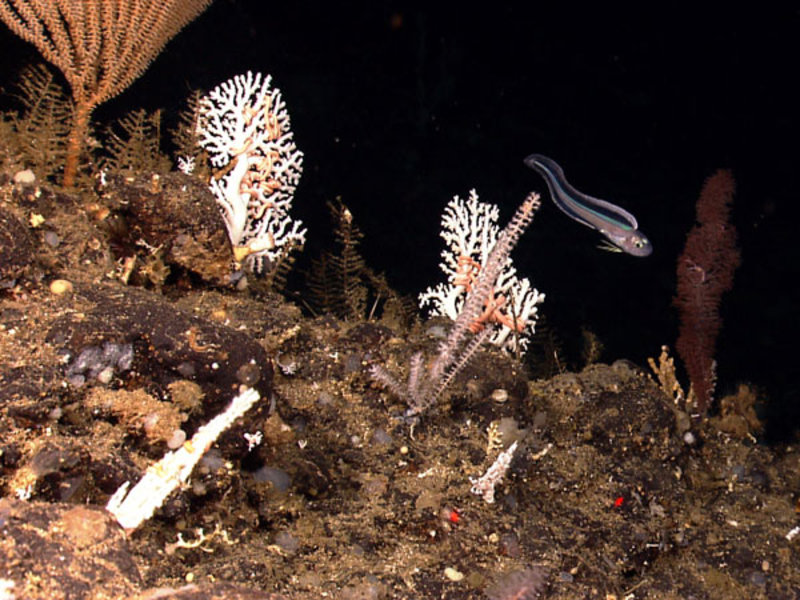
An overview showing the extraordinary biodiversity found at seamount K, even at small scales. Image courtesy of the NOAA Office of Ocean Exploration and Research, INDEX-SATAL 2010. Download larger version (jpg, 707 KB).

An overview showing the extraordinary biodiversity found at seamount K, even at small scales. Image courtesy of the NOAA Office of Ocean Exploration and Research, INDEX-SATAL 2010. Download larger version (jpg, 707 KB).
The first ROV dive of Leg 3 is complete! The ROV was launched at 0400 local time today on "Site K", marking the first dive of cruise leg 3. The ROV descended down to 630 meters and explored an area where water column anomalies were previously detected in multibeam data. After finding no evidence of venting or clues as to the origin of the anomaly, we decided to move west towards the volcano's main cone. As we moved uphill heading west, the abundance of biota rapidly increased: sea fans and black corals were especially abundant. The seafloor substrate was sedimented with heavy ripples and low biodiversity, but contained linear rock outcrops covered with corals, barrel sponges, sea lilies and their associates. We continued to move into shallower waters with steeper terrain, navigating southwest over a ridge; during our traverse biomass and diversity dramatically increased. Large bubblegum coral, seafans,black corals, sea lilies, sponge barrels, hydrocoral and brittle stars filled our field of view. Moving downhill to the south, the abundance and diversity of life declined, and the terrain dropped very steeply, containing few sponges, very scarce corals, some black corals and sea whips. We then started our ascent over the volcano's outer wall, moving northeast towards an area where the two volcanic cones are connected. As we moved to the secondary peak we reached a 'plateau' where the terrain was dominated by a heavily sedimented seafloor with little life, but containing outcrops hosting high coral and sponge diversities. We continued moving east, nearing the summit of the secondary cone, where the abundance and diversity of animals increased once again. In general, this new dive on Site K confirmed that this seamount hosts the highest diversity and abundances of organisms observed so far in the region.